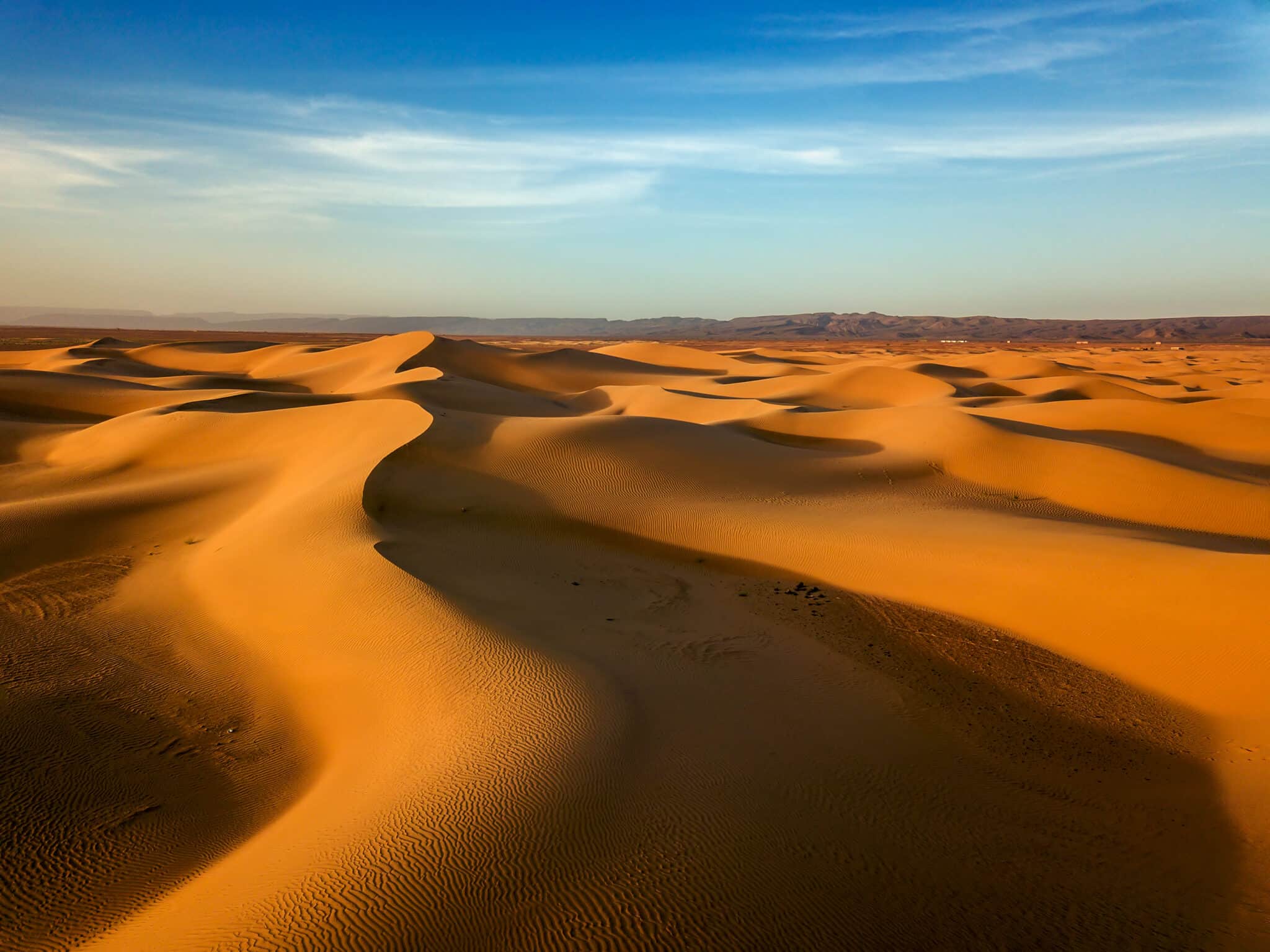No, not a sci-fi fans ultimate crossover movie, but a creation of environmental forces in the deep desert that, until now, have resisted attempts to age or define them.
Star Dunes are mysterious, giant sand structures, whipped up in the desert by opposing winds, to form huge pyramid-like dunes. They can also march slowly across the landscape, and some examples have been doing it for thousands of years.
They reach hundreds of metres in height, and can be found in Africa, Asia and North America (or Saturn, Mars and Titan, depending on where you turn your telescope). Though they’ve been known about for some time, scientists have been uncertain as to their age, or when they first formed.
Now, a team lead by Prof Geoff Duller of the Dept of Geography and Earth Sciences at the University of Aberystwyth in Wales, and Prof Charles Bristow, Professor of Sedimentology at Birkbeck University London, have managed to put a date on it. And it’s old. The lower levels of Morocco’s Lalla Lallia Star Dune were first shaped 13,000 years ago, and the dune has been shifting and growing ever since.
Quoted in the UK’s Guardian newspaper, Prof Duller described the dunes as “extraordinary things, one of the natural wonders of the world. From the ground they look like pyramids but from the air you see a peak, and radiating off it in three or four directions, these arms that make them look like stars.”
The significance for infrastructure
Competing winds from the south-west and north-east created Lalla Lallia, but a constant third wind from the east is nudging it slowly across the desert at the rate of half a metre a year.
”That’s important when you’re thinking about building roads, pipelines or any sort of infrastructure. These things do actually move,
Prof Duller
By using luminescence techniques developed at Aberystwyth, the team were able to determine when the first layers were laid down by gauging the last time minerals in the sand were exposed to sunlight. They also applied ground-penetrating radar at half metre intervals to detect small differences in sand grain sizes and water content beneath the dune’s surface, building a picture of the dune’s interior layers.
The dune they studied is located in Morocco’s Erg Chebbi sand sea, and is thought to be the largest on the planet at 100 metres high and 700 metres wide. It appears to have stopped growing about 9,000 years ago, and took an 8,000-year-long sleep when the Sahara greened over. Then in the last 1,000 years it began growing again, most likely due to having lost its stabilising vegetation during a Sahara climate change. This relatively recent expansion has been one of the surprises of the research.
Ready for a Star Dune experience?
While trekking up and down these vast structures is a challenge, one of the main problems with studying Star Dunes, apparently, is that they are so enormous that it’s sometimes difficult to tell if you’re actually looking at one.
But should you be desperate to hike the real thing and see for yourself, you can visit Colorado’s Great Sand Dunes National Park and Reserve and make your way around their Star Dune, one of the highest in America. Though the Park’s website does warn: “There is no trail. Popular hiking applications are often inaccurate. Plan to take as much as 9 hours to hike round trip. Frigid temperatures and blizzards are common.” Who said studying the mysteries of the environment was easy?





